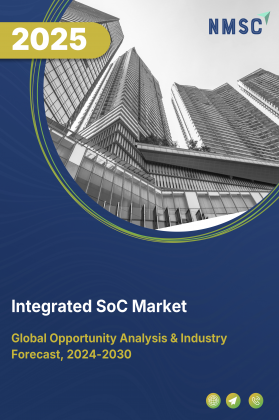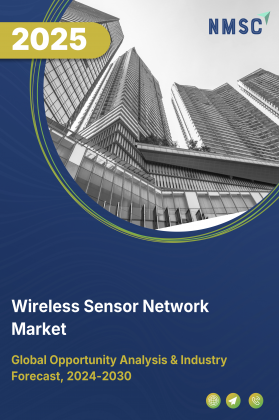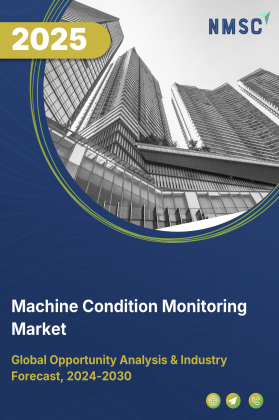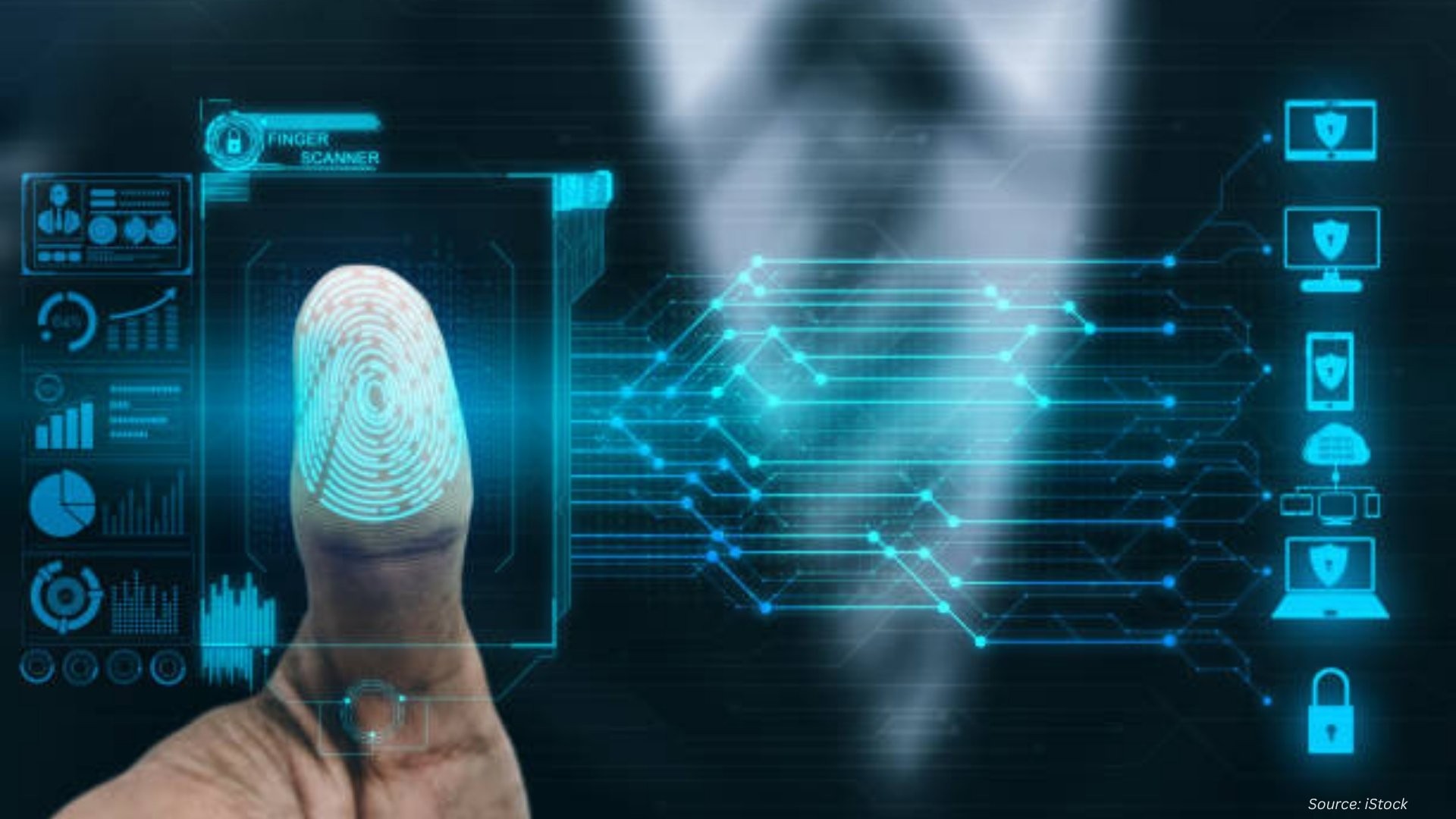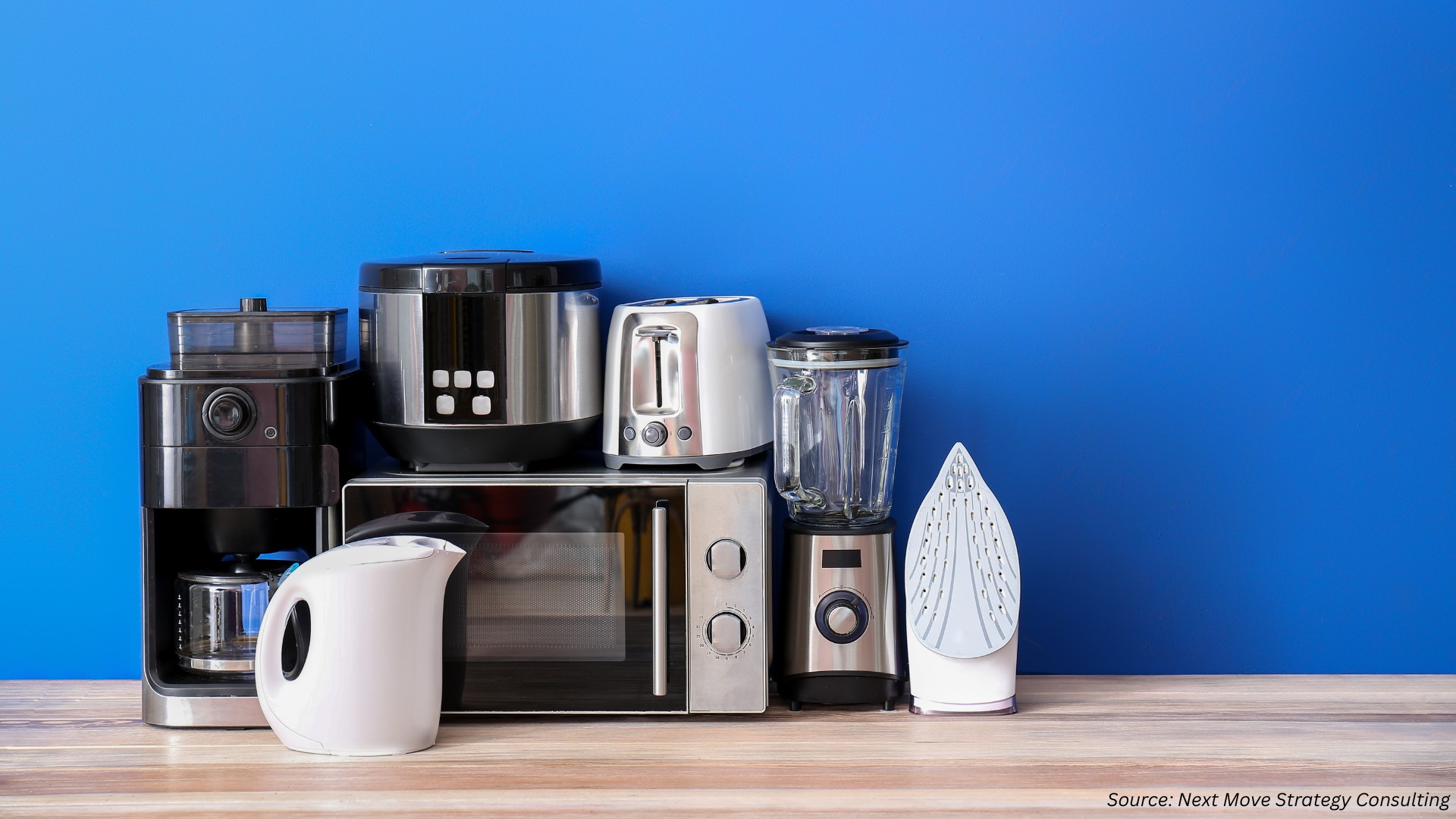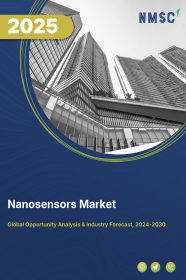
Nanosensors Market by Type (Optical Nanosensors, Physical Nanosensors, Chemical Nanosensors, and Biological Nanosensors), by Manufacturing (Top-Down Method, Bottom-Up Method, and Molecular Self-Assembly), by Sensor Technique (Optical LSPR, Mechanical, Fluorescence & SERS and Colorimetric), and Others- Global Opportunity Analysis and Industry Forecast 2024-2030
Nanosensors Market Overview
The global Nanosensors Market size was valued at USD 781.25 million in 2023 and is predicted to reach USD 1330.27 million by 2030 with a CAGR of 7.9% from 2024-2030. Nanosensors are devices engineered at a nanoscale level to detect and measure physical, chemical, and biological phenomena with high sensitivity and precision.
This market encompasses the development, production, and distribution of these advanced sensors, focusing on leveraging nanotechnology to enhance sensor capabilities and applications. Nanosensors are utilized in various industries including healthcare, environmental monitoring, and industrial process control, and are central to innovations in areas like disease diagnostics, pollution detection, and food safety assurance.
Market Dynamics and Trends
The increasing use of nanotechnology in the healthcare industry for the development of efficient and accurate diagnostics systems that include Oral fluid nanosensor tests (OFNASET) is driving the nanosensors market. The oral fluid nanosensor test is a point-of-care sensor that is capable of detecting oral cancer through the combination of mRNA and protein electrochemical detection. Moreover, the integration of nanosensors with IoT (Internet of Things) and big data analytics has opened new avenues for their application. This integration allows for real-time monitoring and data-driven decision-making across multiple sectors, enhancing the overall utility and demand for nanosensors.
Furthermore, substantial investments in research and development by government and private entities are fueling innovation, leading to novel applications and market growth of nanosensors. A prime example of such investment and its impact can be seen in the work of researchers from the Singapore-MIT Alliance for Research and Technology (SMART). SMART, which is MIT’s research enterprise in Singapore, is at the forefront of developing nanosensor technology, particularly for the detection of foodborne bacteria.
This research, conducted under SMART’s Disruptive and Sustainable Technologies for Agricultural Precision (DiSTAP) interdisciplinary research group (IRG), has received significant funding. This support is enabling researchers to develop advanced food packaging that can detect foodborne bacteria, a breakthrough that could revolutionize food safety standards globally. Such initiatives not only demonstrate the potential of nanosensors in critical areas like food safety but also lead to new applications for nanosensors and contribute to the overall market growth.
However, the production of nanosensors involves sophisticated and often expensive techniques and materials. The high costs associated with manufacturing these intricate devices are a significant barrier to their widespread adoption and commercialization. On the contrary, the introduction of new techniques for manufacturing nanosensors is expected to create growth opportunities and diversification in the coming years.
The development of a new manufacturing technique by engineers at Macquarie University in August 2023 is poised to be a transformative factor for the future of the nanosensors market. This innovative approach significantly reduces the carbon intensity of producing nanosensors, aligning with global efforts towards environmental sustainability. The method not only lessens the ecological footprint of nanosensor manufacturing but also makes the process more cost-effective.
Market Segmentations and Scope of the Study
The nanosensors market is segmented based on type, manufacturing, application, and geography. Based on type, the market is divided into optical nanosensors, physical nanosensors, chemical nanosensors, and biological nanosensors. The optical nanosensors market is further sub-segmented into proximity nanosensors and ambient light nanosensors. The physical nanosensors market is further sub-segmented into pressure, force, mass and displacement. The chemical nanosensors market is sub-segmented into chemical composition and molecular concentration. The biological nanosensor market is sub-segmented into antibody/antigen interaction, DNA interaction, and enzymatic interaction. Based on the manufacturing process, the market is classified into top-down method, bottom-up method, and molecular self-assembly. The top-down method is further sub-segmented into lithography, fiber pulling, and chemical etching. Based on sensor technique, the market is divided into optical LSPR, mechanical, fluorescence & SERS, and colorimetric. Based on application, the market is categorized into healthcare, consumer electronics, automotive & industrial, defense and military, food, agriculture, and environment, aerospace & defense, and others. Geographic breakdown and analysis of each of the aforesaid segments includes regions comprising of North America, Europe, Asia-Pacific, and RoW.
Geographical Analysis
North America dominates the nanosensors market and is expected to continue its dominance during the forecast period. Agencies such as the National Nanotechnology Initiative (NNI) and the National Science Foundation (NSF) in the U.S. provide substantial funding for nanotechnology research, including nanosensors. This support accelerates advancements and commercialization of new technologies. The President’s 2022 Budget earmarked USD 1.98 million for the NNI, underscoring the government’s commitment to investing in foundational research in nanotechnology. This substantial allocation of funds is aimed at fueling discoveries that are essential for advancing future industries and addressing global challenges. Such a high level of investment not only demonstrates the priority given to nanotechnology but also provides the necessary capital to drive innovation and development in the field of nanosensors.
Additionally, the region’s sophisticated manufacturing sector, backed by technological advancements and skilled labor, supports the development and production of high-quality nanosensors. Moreover, stringent environmental regulations in North America, especially in the U.S. and Canada, drive the demand for nanosensors in pollution monitoring and environmental protection.
On the other hand, Asia Pacific is expected to show a steady rise in the nanosensor market due to the large and growing healthcare sector. Rising healthcare standards and increasing investments in medical technologies are driving the demand for advanced diagnostic and monitoring tools, including nanosensors. Moreover, with rising environmental concerns, especially in rapidly industrializing countries, there is a heightened focus on pollution control and environmental monitoring. Nanosensors are crucial in detecting pollutants and hazardous substances, thus witnessing increased adoption.
Furthermore, countries including South Korea and Japan are known for their technological innovation. Their focus on miniaturization and advanced electronics directly contributes to the development and enhancement of nanosensors. Additionally, in countries with large agricultural sectors, including India, nanosensors are being adopted for soil and crop monitoring, contributing to more efficient agricultural practices. These factors collectively contribute to the growth and development of the nanosensors market in the Asia Pacific region, reflecting its dynamic role in meeting the technological and economic needs of these diverse countries.
Competitive Landscape
Various market players operating in the nanosensors industry comprise Agilent Technologies, Inc., Analog Devices, Inc., Nanowear Inc., Bruker Corporation, Nanodevices Inc., Honeywell International Inc., Evident Technologies, Biosensors International Group, Ltd., Kleindiek Nanotechnik GmbH, Sense Secure, and others. These companies are adopting various strategies such as government approvals and expansion of business across various regions to maintain their dominance in the sector.
For instance, Nanowear revealed that its SimpleSense, a wearable and software platform powered by nanotechnology, successfully obtained FDA 510(k) clearance. This approval was specifically for its innovative AI-enabled Software-as-a-Medical Device (SaMD) feature. This regulatory approval highlights the increasing acceptance and integration of nanosensor technology in advanced medical applications, demonstrating the market's potential for growth and innovation, particularly in the field of healthcare technology.
Moreover, in August 2022, Sense-secure collaborated with General Electric Research in the USA to create Sense-PRO 1, the world's inaugural carbon monoxide Nano Sensor Sticker. The Sense-PRO 1 is an innovative, smart, wireless CO sensor sticker that functions independently of any power source.
Key Benefits
-
The report provides quantitative analysis and estimations of the nanosensors market from 2024 to 2030, which assists in identifying the prevailing market opportunities.
-
The study comprises a deep-dive analysis of the nanosensors market including the current and future trends to depict prevalent investment pockets in the market.
-
Information related to key drivers, restraints, and opportunities and their impact on the nanosensors market is provided in the report.
-
A competitive analysis of the players, along with their market share is provided in the report.
-
SWOT analysis and Porter's Five Forces model are elaborated in the study.
-
Value chain analysis in the market study provides a clear picture of the roles of stakeholders.
Nanosensors Market Key Segments
By Type
-
Optical Nanosensors
-
Proximity Nanosensors
-
Ambient Light Nanosensors
-
-
Physical Nanosensors
-
Pressure
-
Force
-
Mass
-
Displacement
-
-
Chemical Nanosensors
-
Chemical Composition
-
Molecular Concentration
-
-
Biological Nanosensors
-
Antibody/Antigen Interaction
-
DNA Interaction
-
Enzymatic Interaction
-
By Manufacturing Process
-
Top-Down Method
-
Lithography
-
Fiber Pulling
-
Chemical Etching
-
-
Bottom-Up Method
-
Molecular Self-Assembly
By Sensor Technique
-
Optical LSPR
-
Mechanical
-
Fluorescence & SERS
-
Colorimetric
By Application
-
Healthcare
-
Consumer Electronics
-
Automotive & Industrial
-
Defense and Military
-
Food, Agriculture, and Environment
-
Aerospace & Defense
-
Others
By Geography
-
North America
-
The U.S.
-
Canada
-
Mexico
-
-
Europe
-
The U.K.
-
Germany
-
France
-
Italy
-
Spain
-
Denmark
-
Netherlands
-
Finland
-
Sweden
-
Norway
-
Russia
-
Rest of Europe
-
-
Asia-Pacific
-
China
-
Japan
-
India
-
South Korea
-
Australia
-
Indonesia
-
Singapore
-
Taiwan
-
Thailand
-
Rest of Asia-Pacific
-
-
Rest of the World (RoW)
-
Latin America
-
Middle East
-
Africa
-
Key Players
-
Agilent Technologies, Inc.
-
Analog Devices, Inc.
-
Nanowear Inc.
-
Bruker Corporation
-
Nanodevices Inc.
-
Honeywell International Inc.
-
Evident Technologies
-
Biosensors International Group, Ltd.
-
Kleindiek Nanotechnik GmbH
-
Sense Secure
REPORT SCOPE AND SEGMENTATION:
|
Parameters |
Details |
|
Market Size in 2023 |
USD 781.25 Million |
|
Revenue Forecast in 2030 |
USD 1330.27 Million |
|
Growth Rate |
CAGR of 7.9% from 2024 to 2030 |
|
Analysis Period |
2023–2030 |
|
Base Year Considered |
2023 |
|
Forecast Period |
2024–2030 |
|
Market Size Estimation |
Million (USD) |
|
Growth Factors |
The increasing use of nanotechnology in the healthcare industry fuels market growth. Investments in R&D by government and private entities to fuel innovations in nanosensors. |
|
Countries Covered |
28 |
|
Companies Profiled |
10 |
|
Market Share |
Available for 10 companies |
|
Customization Scope |
Free customization (equivalent up to 80 working hours of analysts) after purchase. Addition or alteration to country, regional, and segment scope. |
|
Pricing and Purchase Options |
Avail customized purchase options to meet your exact research needs. |




















 Speak to Our Analyst
Speak to Our Analyst



